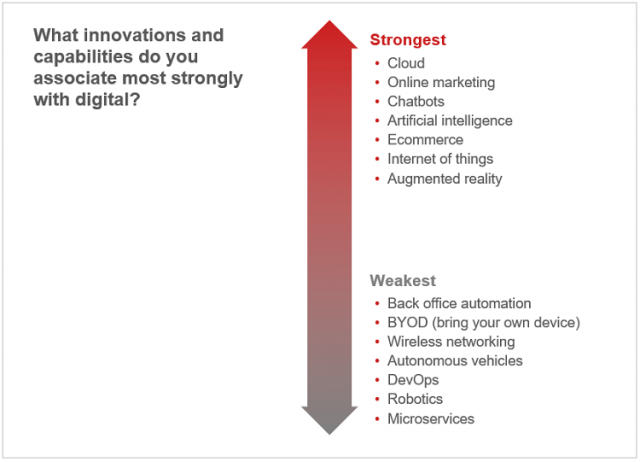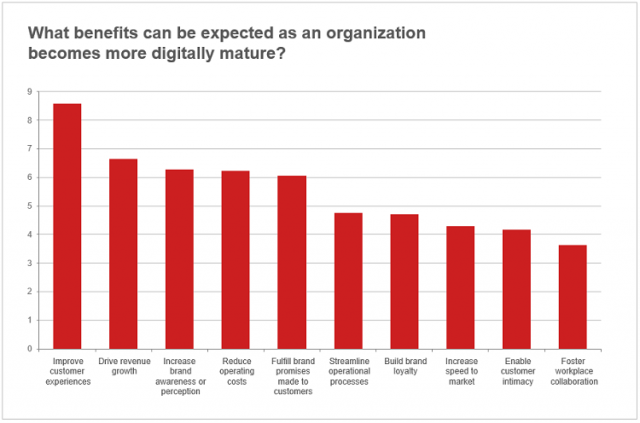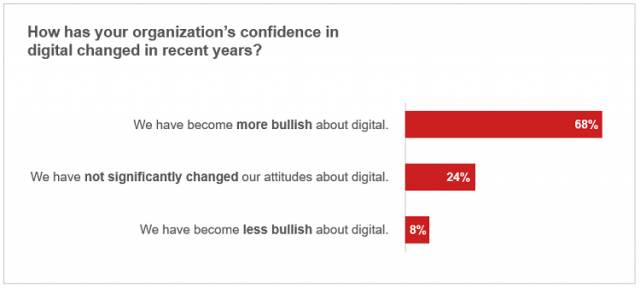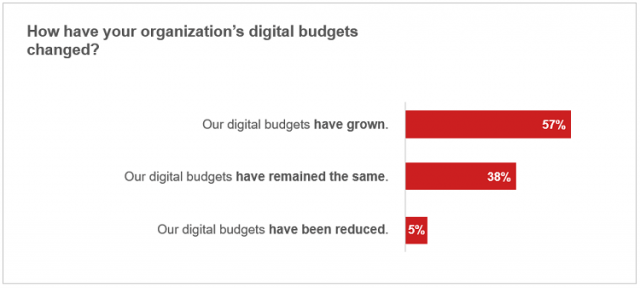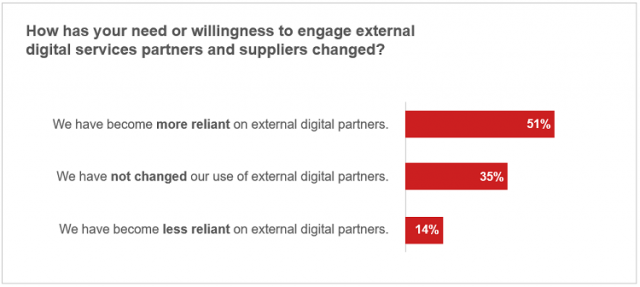In the first installment of this series, we explored the definitions of “digital” preferred by Perficient clients and other digital professionals. This episode continues our exploration into the nature of digital. We’ll look at the business benefits expected of digital, innovations associated with it, and attitudinal trends shaping investments in digital.
Digital by Association
In our research, we wanted to learn about the types of innovations participants considered to be digital. We offered a list of 40 common capabilities and asked them to choose the ones most closely associated with digital. Terms resulting in the strongest (closest) connections to the digital included cloud, online marketing, chatbots, AI, and eCommerce. Back-office automation, BYOD (bring your own device), wireless networking, robotics, and autonomous vehicles were seen as having weaker connotations. Consistent with our definitions question (see Part 1), most of the strong-connection terms were commonly associated with customers. They also represented more recently introduced capabilities, relative to the weak-connection innovations in the list. TL;DR: digital relates closely to customers, and “the new.”
The Why Behind the What
We then asked respondents about the benefits an organization could realize by becoming more digitally mature. Of 10 possible choices, “improved customer experiences” was cited – by a wide margin – as the top benefit. The next most popular was “revenue growth,” followed by “increased brand perception and awareness.” “Fostering workplace collaboration” was the benefit least associated with digital. These findings suggest digital maintains a stronger affiliation with top-line impact over internal improvements.
Responses were generally consistent across participant roles, with a few tantalizing exceptions. Respondents in IT roles included “reduce operating costs” in their top responses. Senior executives added “fulfill brand promises made to customers,” to their top responses and eCommerce folks chose “increase speed-to-market” as a top benefit. Clearly, expectations of digital align closely with the fundamentals of business – driving revenue growth, building brands, and increasing operational efficiency.
Digital on the Rise
Our survey concluded with three questions about the evolution of digital attitudes. A majority of respondents observed that their organizations have become more confident in their ability to use digital to reach key goals in recent years. Most respondents also agreed their organizations’ savviness has increased when it comes to making decisions about strategic investments in digital.
Given the agreement on the business impact of digital, it’s no surprise funding for digital initiatives remains strong. About two-thirds said digital budgets have increased in the past few years. A little less than one-third said digital funding has stayed the same, with only a few reporting a decrease.
Respondents said their teams have become more confident in using digital to meet goals, even as they continue to welcome support from external digital services partners. When asked about their organizations’ use of external support, about half said their need and willingness to use such providers has increased. Almost everyone else reported this need holding steady in recent years.
To Reach Maturity, Start with Clarity
Whether you use digital to chart the frontiers of innovation, optimize core businesses or develop a customer-centric culture (or all three), digital maturity remains an important goal. Organizations that can’t clearly define digital for their teams and for the benefit of customers put themselves at a disadvantage as they attempt to reach higher levels of maturity. Leaders looking for quick consensus on “digital” may not find it. And yet success requires taking action by clarifying these crucial definitions and setting defined targets.
Establishing a shared understanding can be hard work. Fuzzy definitions persist in the face of unclear objectives and misaligned missions, especially given the dynamic market conditions in which most digital teams operate. Yet the need for digital-led progress is an ongoing business imperative, making it worth the effort to define the why, what, and how of your digital ambition.
For more on clarifying your digital vision and strategy, download our guide The Digital Essentials, Part 1.

